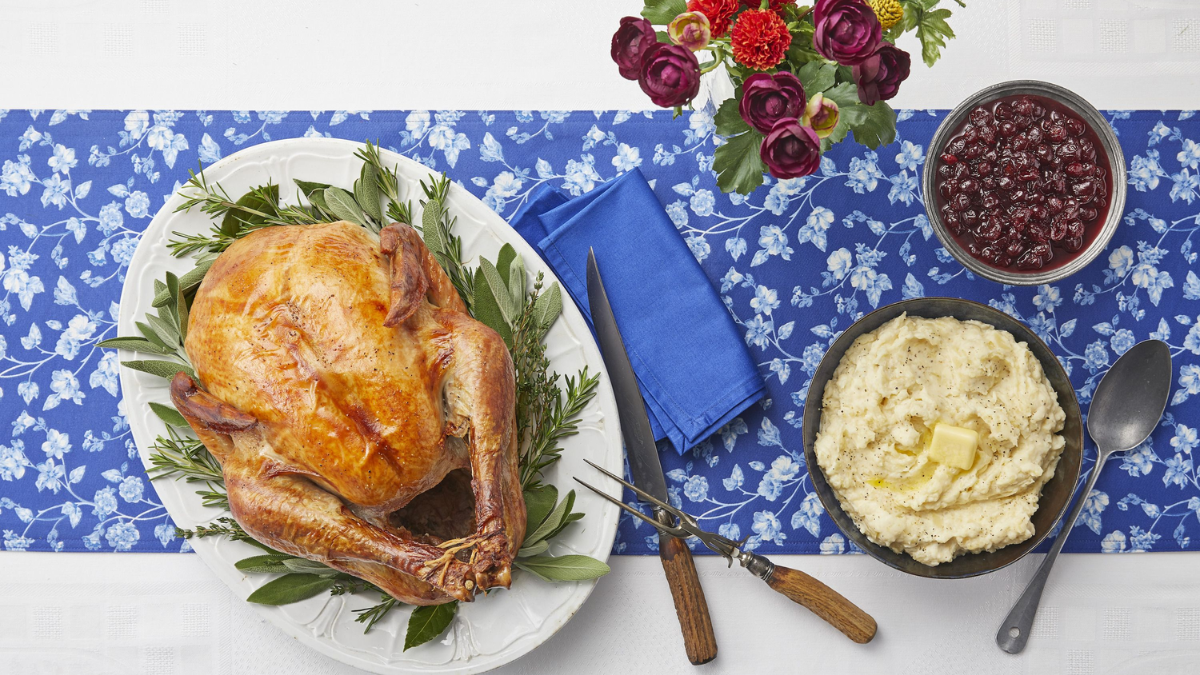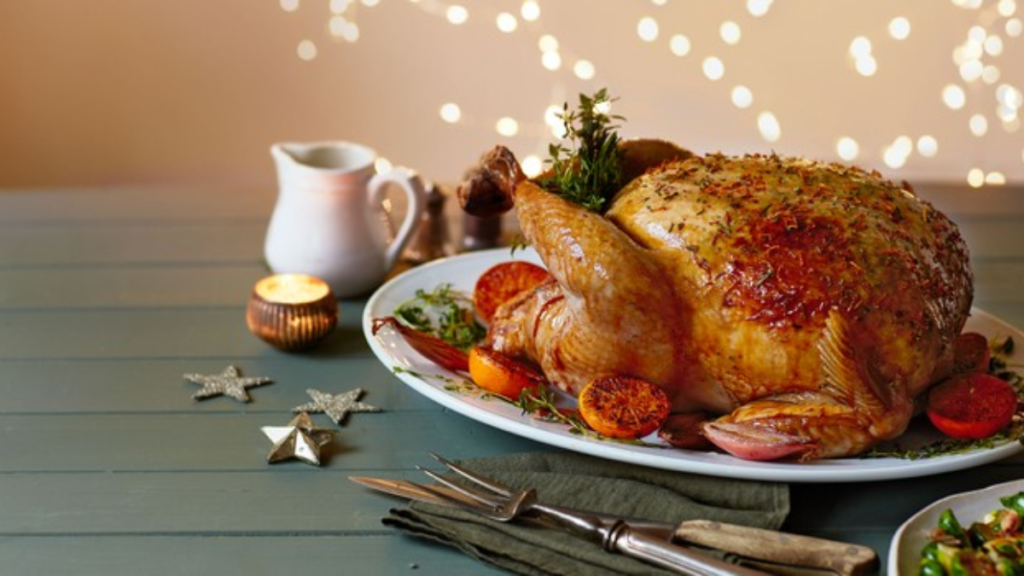Learn how to reheat leftover roast turkey to stay succulent and tasty. There are a plethora of things you can do with leftover turkey. It goes well in any meal that calls for chicken, but it can get dry, particularly the breast flesh, because it’s such a lean meat. Here, we’ll go over how to avoid this from happening in the first place and how to reheat turkey so you can enjoy it again as it is.
As much as we adore turkey leftovers for their convenience, we prefer them when we can enjoy them for their flavor. Even a properly cooked turkey can readily become over-zapped in the reheating process. To get the most out of Thanksgiving dinner, we tried reheating turkey in various ways, from a leisurely bake in the oven to a quick microwave reheat.
How to Reheat Turkey?
These are the greatest options for reheating leftover turkey to consume as-is.
Method-1. Reheat Turkey in the Oven
- Heat the oven to 180C/160C fan/gas 4.
- Carve the turkey breast meat into thin slices and carve the leg meat off the bone. Lay in a roasting tin or gratin dish. Pour enough turkey or chicken stock, so there is about 5mm in the bottom of the dish. The dot over small pieces of butter (about 25g total should do it, but more won’t hurt).
- Cover the dish tightly with foil and roast for 30 mins until the turkey is very hot – at least 75C on a cooking thermometer. Leave to rest for a few minutes in the juices and serve.
Method-2. Reheating Turkey on Stovetop
This is our second most-favored technique. It takes less time than baking, but the turkey is juicier than cooked in the microwave. If you’re reheating skin-on pieces, it’s also a good alternative.
- Place the turkey pieces and 1/2 cup of chicken stock in a skillet. Over medium-high heat, cover the pan and bring the contents to a simmer.
- Cook for a few minutes or until the turkey is thoroughly warmed. Remove the liquid and dry the pan with a clean towel if you want the skin to crisp up.
- Heat a teaspoon of oil in a small saucepan over high heat. Cook for 3 to 5 minutes until the exterior of the reheated turkey is crispy, skin-side down.
Method-3. Reheat Turkey in the Microwave
A microwave is ideal when you only need to reheat one or two meals and don’t want to use the oven.
- Carve the breast meat into thin slices and take the leg meat off the bone.
- Lay in a microwavable dish or container and drizzle with stock or gravy.
- Cook for 2 mins on a medium-high setting, then check. If it’s not very hot, cook in 30-second bursts until piping hot. Leave to rest for a few minutes before serving.
Additional Safety Tips for Reheating Turkey:
- The cold, cooked turkey meat will keep in the fridge for up to four days, but always use your best judgment.
- Always reheat cold turkey until it’s piping hot, not just warmed through.
- Only reheat cooked turkey once.
What is Reheating?
Reheating is the thermal process of heating products that have been previously cooked and refrigerated in a food service company. Many viruses can be killed by properly cooking food (disease-causing organisms). When reheating for hot holding, time/temperature control for safety (TCS) foods (also known as potentially hazardous foods or PHF) must be warmed to 165°F or greater for 15 seconds.
Before consumption, TCS meals prepared and packaged in a commercial facility must be heated to a temperature of 135°F or above. Reheating hot-holding meals should take no longer than 2 hours to ensure food safety. The more processed an item is, the bigger the risk.
Because of personnel, equipment, processes, and other variables, contamination risks increase when food is held, chilled, and then reheated. Cooked and chilled food travels through the temperature danger zone of 41°F to 135°F (the optimal temperature range for germs to thrive) several times, increasing the risks.
How to Keep your Turkey Succulent?
If the turkey meat is dry when it first comes out of the oven, it won’t last long once it’s been chilled. However, you can do a few things ahead of time to ensure the most succulent roast.
1. Dry-Brining your turkey
You may make a much juicier roast by simply sprinkling the raw turkey with salt up to two days before roasting. A complete bird can be seasoned up to a day, a crown up ahead of time, and a boneless turkey breast no sooner than the night before.
2. Don’t Overcook Turkey
The main cause of dry turkey meat is overcooking. The best way to make sure you don’t overcook your turkey is to use a digital cooking probe. The turkey is done when the thickest part of the thigh or the thickest part of the breast reaches 75°F or 65°F.
3. Resting Turkey
The meat relaxes and reabsorbs its juices when you rest your turkey after roasting. Before cutting, any turkey roast, from the whole bird to a boneless breast joint, should be well-rested. Place the turkey on a board or platter in the kitchen and leave it there while you finish the rest of your tasks. A boneless breast joint can be cooked for 20-30 minutes, while a crown or full bird can be cooked for 40 minutes and will still be warm after an hour.
4. Adding the Juices Bac
Because the turkey loses its juices while you’re cutting, serving it carved on a plate is a lot less complicated than carving at the table. Pour the gathered liquids back over the cut turkey before serving to keep it succulent as it cools.
5. Covering the Cooked Meat
There’s usually a lot going on, so it’s tempting to leave your turkey uncovered in the fridge, or an oven turned off for the night, but this will only dry it further. For safety and to help keep the turkey at its juiciest, cover and refrigerate it or carve it and chill it in an airtight container no more than 2 hours after eating.
Can you Cook a Turkey the Day Before and Reheat it?
Absolutely! If you want a stress-free Thanksgiving, cook the turkey first and then let it rest as usual (or use our flavorful method for grilling turkey). Then, before placing it in the refrigerator, carve it and cover it snugly with a lid or plastic wrap.
Dinner is ready when you reheat it using one of the above techniques. The oven method is excellent in this case, mainly because it fills your kitchen with the delicious aroma of cooked turkey. Your dinner guests will believe you spent the entire morning in the kitchen!
How Many Times can you Reheat Turkey?
We should all eat meals as soon as possible after being prepared, and this is when it is at their freshest and most flavorful. However, regarding food safety, you can safely reheat food several times if you reheat it at the correct temperature and for the correct amount of time.
However, the Food Standards Agency (FSA) suggests that food be reheated only once, so if at all feasible, follow this advice. If you’re reheating food, ensure it’s hot all the way through.
This means the bacterium has been destroyed, and the food has been adequately reheated. Be careful that the quality of the meal may degrade each time you reheat it, depending on the food. Unfortunately, the consistency and even flavor of goods like pastries will not be as nice as the first serving.
How to Use Leftover Turkey?
The possibilities are unlimited when it comes to repurposing turkey leftovers. Turkey leftovers can be used in almost any recipe that calls for a broth or sauce base. Turkey is a great nutritious alternative to beef and hog.
Make turkey pot pie, enchiladas, or turkey tetrazzini with your leftover turkey. Use leftover turkey in a Southwestern turkey soup or a creamy turkey curry for the ultimate cold-weather treat.
Do you want some turkey for breakfast? To make a turkey hash, combine it with sweet potatoes. Instead of reheating the leftovers, mix them with a cranberry turkey sandwich or a Thanksgiving salad. Both are so simple to prepare that even non-cooks in the family can do it. They’ll also keep the seasonal flavors going strong.
How to Store Leftover Turkey?
Set yourself up for success by properly keeping your turkey leftovers, depending on how you plan to reheat or repurpose them. Before preserving a turkey, carve it into more manageable chunks; this will save you time the next day and allow you to fit it into the fridge more easily.
Fill airtight containers or gallon bags with turkey leftovers, pressing out as much air as possible. Placing the turkey bones in a slow cooker and making fresh turkey stock overnight is another technique to ensure taste. This will aid with reheating and can also be utilized in future dishes.
Conclusion
The first step is to store the turkey carefully. Don’t just dump it on a platter and put it in the fridge; overnight, exposing the meat to air is the quickest way to get a dry crust.
Keep leftover turkey tightly covered or, better still, in a sealed container once it has cooled. The next step is to add moisture when you reheat the meat, as you can see from the reheating techniques listed above.
Finally, we strongly advise covering the turkey while it reheats. Use an oven-safe aluminum foil pouch, a microwave-safe dish, or a skillet with a tight-fitting lid. The leftovers taste better if the fluids surround the turkey meat rather than escaping into your kitchen.


